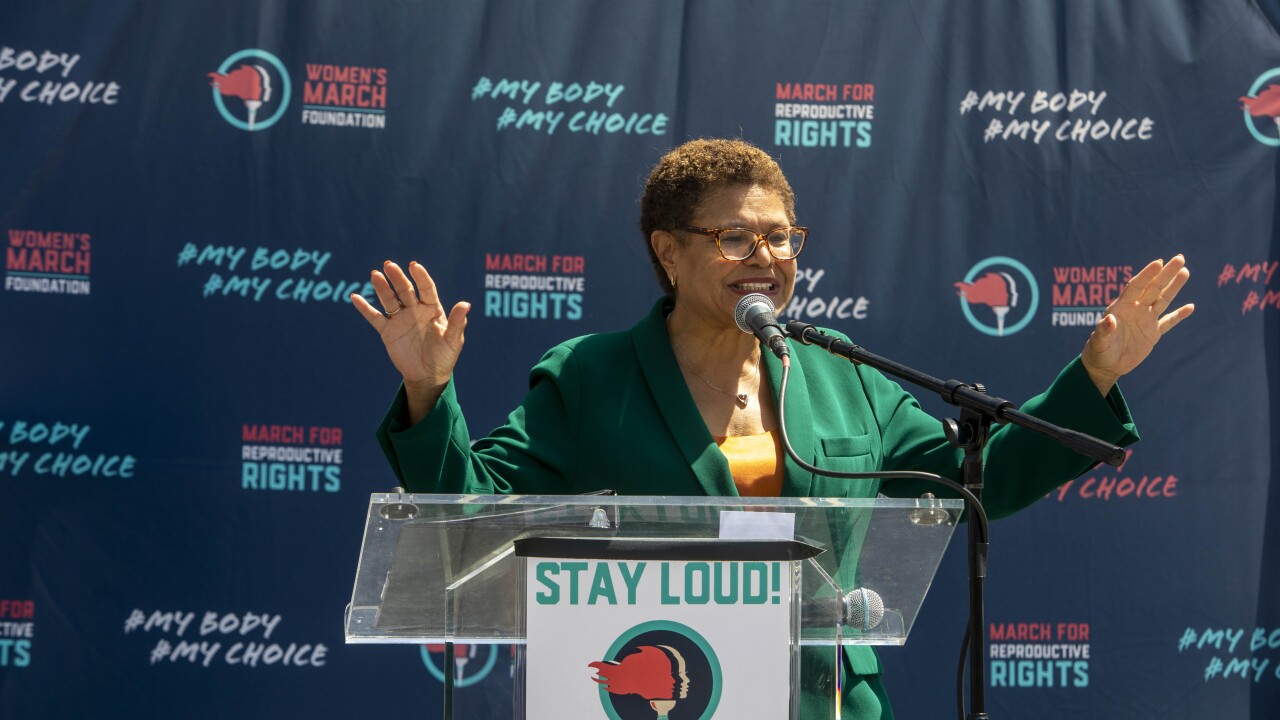More municipal bond sellers than buyers Wednesday fueled an increase in yields across the curve.
That was particularly true for the intermediate range, and heftier supply in the primary space didn’t help.
“You saw a heavier selling pressure in the secondary market today,” a trader in New York said. “Guys were buying bonds with both fists late afternoon last Thursday. Now, as rates climb, they really want to get rid of them.”
Tax-exempt yields Wednesday continued their ascent. They rose two basis points out to three years, according to the Municipal Market Data scale.
Yields between four and seven years were up three to five basis points. Those from eight years to 13 years were up four to nine basis points. Yields beyond 13 years were two or three basis points higher.
The 10-year muni yield jumped nine basis points on Wednesday to 2.18%. It has more than erased the rally gains that brought it to a record low of 1.97% late last week.
The 30-year yield increased three basis points on the day to 3.55%. The two-year yield moved for the first time in 10 sessions. It rose two basis points to 0.34%.
Treasury yields jumped six points higher by early afternoon on the intermediate to long end before firming to end the day flat. In the past two sessions traders have seen rate increases that reversed the incredible rally they saw at the intermediate and longer parts of the curve last week.
The benchmark 10-year Treasury yield held steady at 1.99%. The 30-year yield, which plunged as much as 53 basis points last week, remained unchanged at 3.08%.
The two-year yield ticked up one basis point to 0.26%.
“We’re going to weaken until we know where things are, barring some crazy thing happening,” the trader said of muni yields. “All of the markets here and overseas are fragile.”
Muni ratios to Treasuries are still attractive, even with the recent rise in rates, according to Janney Capital Markets’ Alan Schankel. Ratios across the curve holding above 100% is a sign that investors want more yield for triple-A munis than they do for Treasuries, Schankel wrote in a recent report.
By Wednesday’s close, ratios stood at 131%, 110% and 115%, respectively, for two years, 10 years and 30 years, according to MMD.
In fact, the market has seen ratio levels above 100% in just 45 weeks over the past three decades. They remain elevated for technical and fundamental reasons.
Technically speaking, Schankel wrote, there’s been more new-issue volume this month than we’ve seen this year except for June. But reinvestment flows reveal a key difference on the demand side between June and September.
“Whereas June had $24 billion in maturing and called bonds generating funds for reinvestment, the estimate for September is closer to $13 billion,” Schankel wrote. “This imbalance likely contributed to higher ratios.”
The general feeling of municipal credit concerns and the uncertainty stemming from the various proposals to reduce or quash outright the muni bond tax exemption are affecting ratios, as well.
“Today’s levels bode well for future relative performance,” Schankel wrote, “although, as long as credit and taxation uncertainty permeate the market, however, we expect muni-to-Treasury ratios to remain somewhat above historical levels.”
The market anticipates a slight drop in new supply for this week, after a substantial increase in issuance last week.
This week, the market expects an estimated $6.83 billion in new supply. Last week saw a revised $7.86 billion of volume.
In the negotiated market, Citi priced $407.9 million of Los Angeles Unified School District general obligation refunding bonds in two series. The bonds were rated Aa2 by Moody’s Investors Service and AA-minus by Standard & Poor’s.
Yields for the first series, worth $207 million, ranged from 0.57% with a 2.00% coupon in 2013 to 3.40% with a 5.00% coupon in 2024.
Credits maturing in 2012 were offered in a sealed bid. There were no more orders for those maturing in split maturities in 2014, 2015, 2016, 2017, 2018, as well as in 2019 and 2021.
Yields for the second series, $200.9 million, ranged from 0.57% with a 2.00% coupon in 2013 to 3.21% with a 4.00% coupon in 2023. Credits maturing in 2012 were offered in a sealed bid.
JPMorgan priced $346.1 million of Las Vegas Valley Water District general obligation bonds in two series. The bonds were rated Aa2 by Moody’s and AA-plus by Standard & Poor’s.
Yields for the first series, $267.1 million, ranged from 0.80% with a 2.00% coupon in 2013 to 4.45% with a 5.00% coupon in 2038.
There are no more offers for debt maturing in 2031.
Yields for the second series, $79 million, ranged from 0.80% with a 2.00% coupon in 2013 to 4.11% with a 5.00% coupon in 2027.
There are no more offers for debt maturing from 2013 to 2019, as well as 2021 and 2022. Credits maturing in 2015 and 2017 have split maturities.
On the competitive side, JPMorgan won $161.4 million of Maryland Department of Transportation consolidated bonds. The bonds are rated Aa1 by Moody’s, AAA by Standard & Poor’s and AA-plus by Fitch Ratings.
Yields ranged from 1.47% with a 5.00% coupon in 2018 to 1.74% with a 5.00% coupon in 2019.
Credits maturing in 2015 through 2017 were not formally re-offered.





